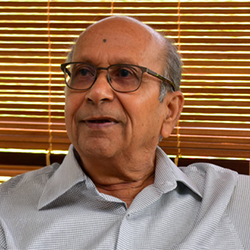Publicité
Made in QEC

Do you remember the days when Mauritius was in the dock, accused of exporting textile products to Europe under the label ‘Made in Mauritius’ when these were in fact made in other countries? The label was stuck in Mauritius when the products transited here and were re-exported to EU states.
Similarly credit is being given to QEC as the students who bag the prestigious HSC scholarships do so under the label ‘QEC’. These students spend only about 18 months at that institution, coming from secondary schools where they had spent five years and obtained excellent results at the Cambridge SC examination. These formative years are not given any official recognition when it comes to giving them credit for their performance.
Anyway we are expert at erasing the past, as we do regarding the political history of Mauritius.
Why is it that we refuse to give credit to other institutions and other persons? Is it because our ‘education’ system does not encourage thinking skills and broadening of the curriculum to include other than the traditional areas? The most popular combination of subjects on the science side is the same as it was when I took the HSC exam more than half a century ago, i.e. Mathematics, Physics and Chemistry as principal subjects and General Paper and French as subsidiary subjects.
We talk about democratization of secondary education but we forget about past initiatives to do so. The first step after independence was taken by Sir Kher Jagatsingh in the 1970s with the setting up of 15 Junior Secondary schools.
Then came free secondary education under SSR in 1977.
The objectives of the Junior Secondary Schools and of free secondary education were not just to follow the same academically oriented curriculum of the few existing State and Confessional schools. A Form III exam was devised by the MIE for post-Form III orientation after the Forms.
I-III curriculum was revamped to include some new areas like Industrial Arts and Home Economics. But the Form III exam was hurriedly withdrawn, even after the question papers had already been printed, due to the opposition of traditionalists and vested interests.
The idea of a Form III exam was again mooted on and off, but not much came out of it. The most sustained effort was made by Kadress Pillay in the dying years of the last century. He had proposed to build 60 identical lower secondary schools to get rid of the competition at the primary school level. This again came to nothing in the face of opposition from the same groups of vested interests.
It was left to Steven Obeegadoo from 2000 to 2005 to launch the most comprehensive reform of the secondary school structure to divide them into Forms I-V secondary schools and Form VI colleges with the construction of some 50 new secondary schools. But it was short lived as Dharam Gokhool preferred to walk backwards in the name of reform and branding empty slogans like ‘world class education’ instead of consolidating the progress already achieved.
We are talking a lot about Singapore these days without trying to find out what Singapore has achieved in the field of education. Yes, it has a competitive end–of-primary exam, but its primary and secondary schools have all the required resources – physical as well as human – to deliver a really ‘world class education’. Its polytechnics, which students join after GCE ‘O’ levels, are like mini-universities. We can also have a look at other systems like the French ‘Baccalaureat’ and the International Baccalaureate, instead of remaining satisfied with ‘cosmetic’ reforms, preferring to ignore the dramatic advances made in the world, particularly in the fields of communication, science and technology. But maybe we like our educational system to remain fossilized because of the folklore surrounding the laureate scheme.
Publicité
Publicité
Les plus récents






